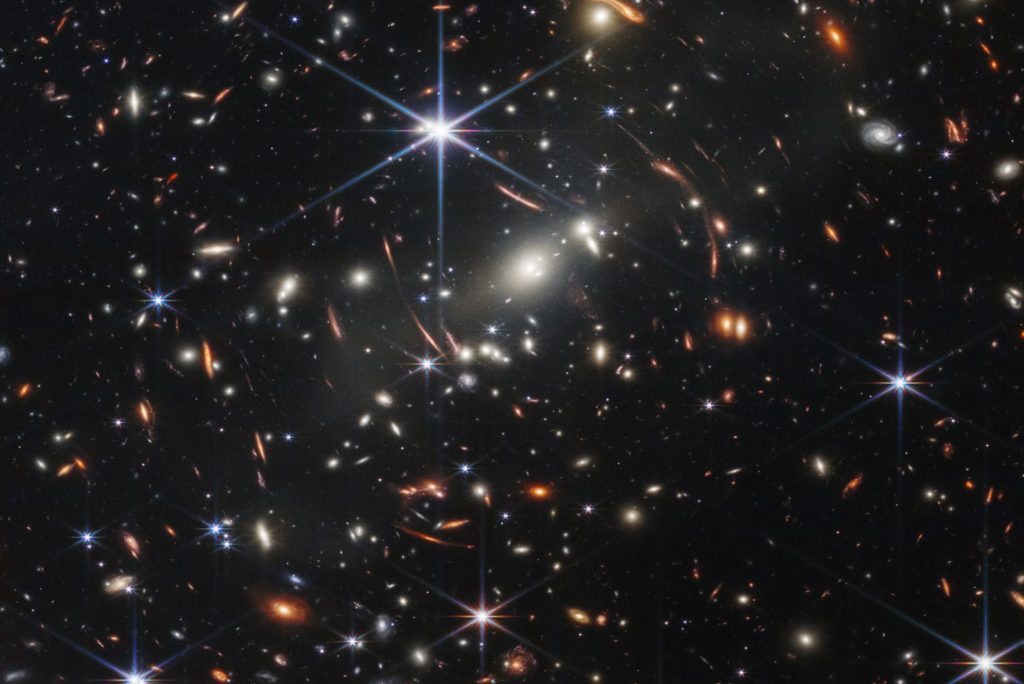NASA just released the first images from the world’s most powerful and largest space telescope, and it gives us a mind-numbing view of the cosmos.
NASA’s James Webb Space Telescope has given us the highest-resolution view of the universe to date, allowing us to see star clusters and other small-scale objects in rich detail.

In the infrared image above, each fuzzy spot of light is a galaxy containing billions of stars.
And there are thousands of galaxies in this image that covers a patch of sky that’s about the size of a grain of sand held at arm’s length by a person on the ground.
For the mathematically minded, the image represents an area of the sky with an optical resolution of 17 milli-arc seconds or 0.0000194 degrees of sky. A full moon measures 0.5 degrees.
You might think the image looks weirdly distorted, and you would be right.
Gravitational lensing is responsible for this effect.
What this means is that the immense gravitational field of a galaxy cluster causes light to bend around it and magnify in the process.
NASA showed five images from the James Webb telescope in a tweet on July 12.
Is anyone else starstruck?! 🌌 @NASAWebb's first images have been released! Which one is your favorite? #UnfoldTheUniverse
View all five images HERE>> https://t.co/lY7oJNSyx0 pic.twitter.com/y9Lfjvm1I8— NASA Marshall (@NASA_Marshall) July 12, 2022
You can also check out the images on NASA’s website.
Jim DeLillo writes about tech, science, and travel. He is also an adventure photographer specializing in transporting imagery and descriptive narrative. He lives in Cedarburg, WI with his wife, Judy. In addition to his work for MetaStellar, he also writes a weekly article for Telescope Live.

